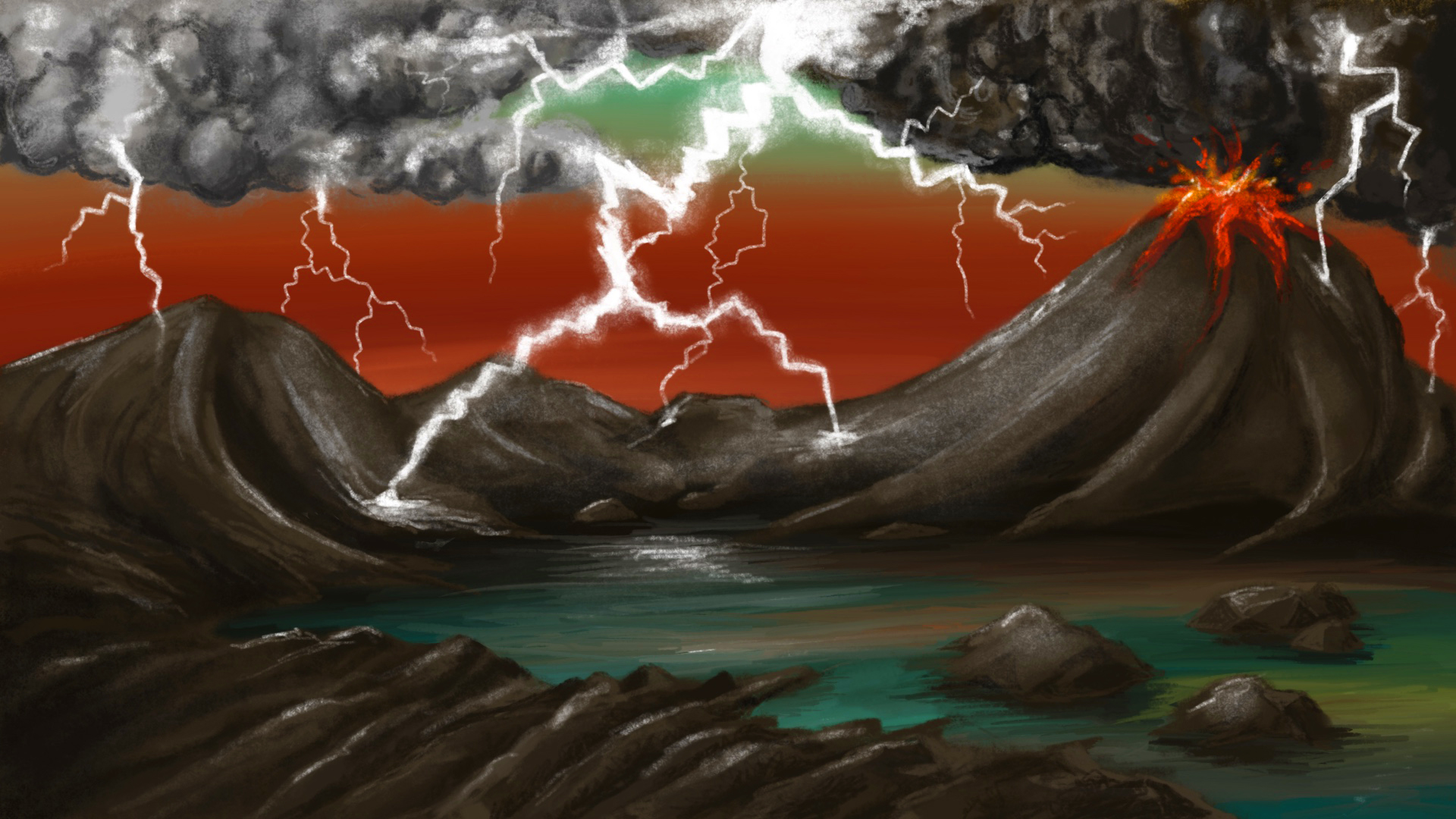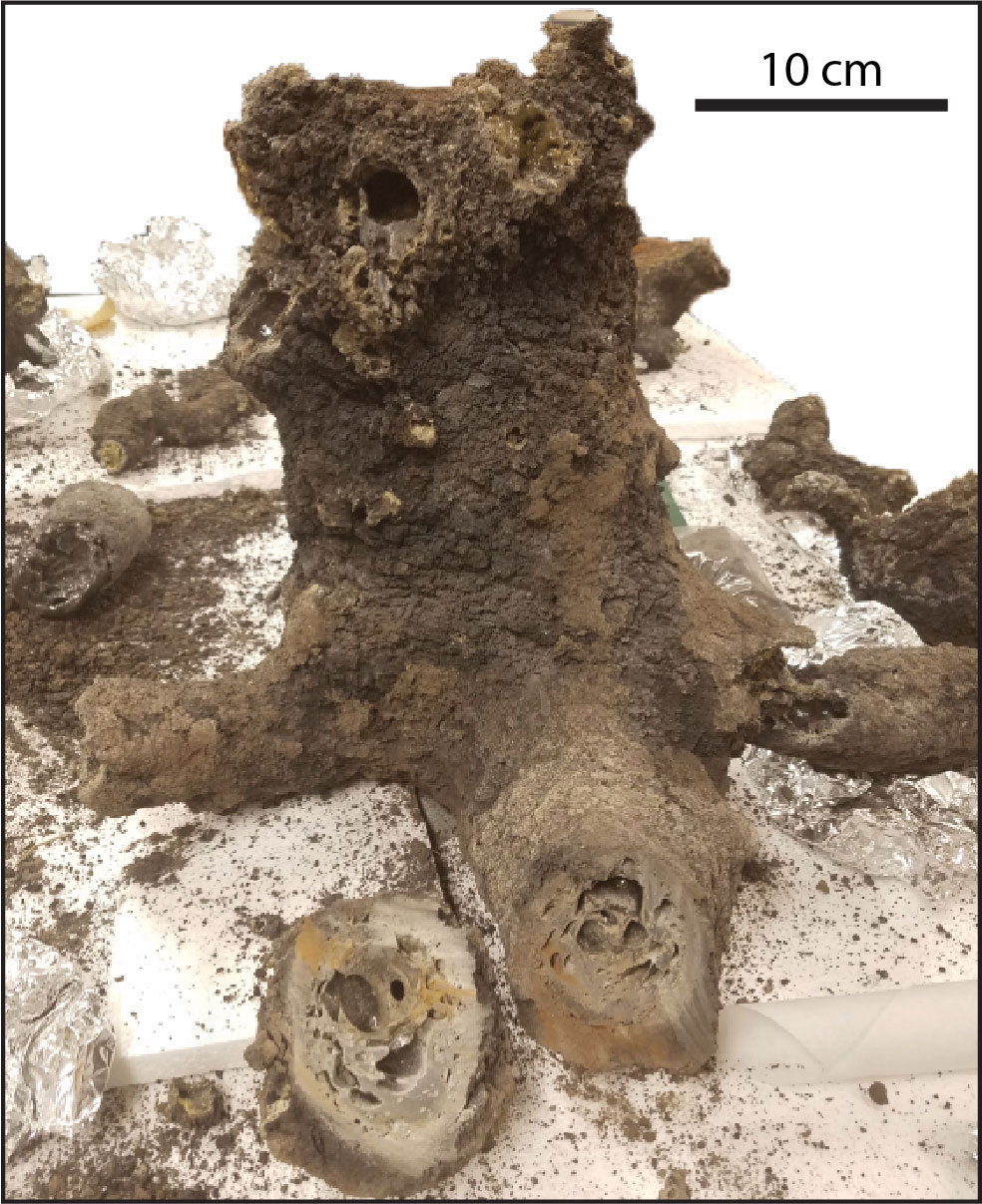Billions of lightning bolts may have jump-started life on Earth, study suggests
How did Earth get the phosphorus it needed to make the first DNA and RNA molecules? The answer may be crackling through the sky.

Life on Earth may have begun with a flash of lightning.
No, an errant thunderbolt didn't literally animate the world's first microbes (sorry, Dr. Frankenstein). But according to a new study published Tuesday (March 16) in the journal Nature Communications, trillions of lightning strikes over a billion of years of Earth's early history may have helped unlock crucial phosphorus compounds that paved the way for life on Earth.
"In our study, we show for the first time that lightning strikes were likely a significant source of reactive phosphorus on Earth around the time that life formed [3.5 billion to 4.5 billion years ago]," lead study author Benjamin Hess, a graduate student at Yale University's Department of Earth and Planetary Sciences, told Live Science. "Lightning strikes may have therefore played a role in providing phosphorus for the emergence of life on Earth."
Related: Earth has a hidden layer, and no one knows exactly what it is
Bombarded with life?
How does a bolt from the blue lead to terrestrial life? It's all about the phosphorus — or rather, the organic materials that phosphorus atoms can make when combined with other bio-essential elements.
Take phosphates, for example — ions composed of three oxygen atoms and one phosphorus atom, which are crucial to all known forms of life. Phosphates form the backbones of DNA, RNA and ATP (the chief source of energy for cells), and are major components of bones, teeth and cell membranes.
But about 4 billion years ago, while there was likely plenty of water and carbon dioxide in the atmosphere to work with, which are also essential for life's fundamental molecules, most of the planet's natural phosphorus was bound up in insoluble rock, and impossible to combine into organic phosphates. How, then, did Earth acquire these critical compounds?
Sign up for the Live Science daily newsletter now
Get the world’s most fascinating discoveries delivered straight to your inbox.
One theory holds that early Earth got its phosphorous from meteors carrying a mineral called schreibersite, which is made partly of phosphorous and is soluble in water; if loads of schreibersite meteorites crashed into Earth over millions or billions of years, then enough phosphorus could be released into a concentrated area to create the right conditions for biological life, according to the new study.
However, about 3.5 billion to 4.5 billion years ago, when life on Earth emerged, the rate of meteor strikes on Earth dropped "exponentially" as most of our solar system's planets and moons had largely taken shape, Hess said. This fact complicates the interstellar phosphorus theory.
However, there is another way to make schreibersite, right here on Earth, Hess said. All it takes is some land, a cloud and a few trillion jolts of lightning.

Billions of bolts
Lightning strikes can heat up surfaces to nearly 5,000 degrees Fahrenheit (2,760 degrees Celsius), forging new minerals that weren't there before. In the new study, Hess and his colleagues examined a lightning-blasted clump of rock, called fulgurite, which was previously excavated from a site in Illinois. The team found that little balls of schreibersite had formed within the rock, along with a host of other glassy minerals.
With tentative proof in hand that lightning strikes can create phosphorus-rich schreibersite, the team next had to calculate whether enough lightning could have struck early Earth to release a significant amount of the element into the environment. Using models of Earth's early atmosphere, the researchers estimated how many lightning strikes may have fallen over the planet each year.
Today, about 560 million lightning bolts flash over the planet a year; 4 billion years ago, when Earth's atmosphere was significantly richer in the greenhouse gas CO2 (and therefore hotter and more prone to storms), it's likely that anywhere from 1 billion to 5 billion bolts flashed each year, the team calculated. Of those bolts, the team estimated that between 100 million and 1 billion bolts struck land each year (the rest discharged above the oceans).
And, over a billion years, up to a quintillion (a 1 followed by 18 zeros) lightning strikes may have hit our young planet, each one releasing a bit of usable phosphorus, Hess said. The team calculated that, between 4.5 billion and 3.5 billion years ago, lightning strikes alone could have given Earth anywhere from 250 to 25,000 pounds of phosphorus (110 to 11,000 kilograms) per year.
That's a huge range, with a lot of uncertainty about the conditions of early Earth built into it. But Hess said that even the lowest quantity of phosphorus could have made a difference for the emergence of life.
"For life to form, there just needs to be one location that has the right ingredients," Hess told Live Science. "If [250 lbs.] of phosphorus a year were concentrated in a single tropical island arc, then yes, it may well have been enough. But it's more likely that will happen if there are many such locations."
Whether lightning did strike enough exposed land on early Earth to make an impact on life is a question that can never be fully answered. However, the new study shows that, mathematically, it was at least possible.
It may be that a combination of asteroid impacts and lightning strikes ultimately gave Earth the phosphorus it needed to weave the first bio-essential molecules, such as DNA and RNA, the researchers concluded. But further studies of early terrestrial life should take care not to strike lightning from the record.
Originally published on Live Science.

Brandon is the space/physics editor at Live Science. His writing has appeared in The Washington Post, Reader's Digest, CBS.com, the Richard Dawkins Foundation website and other outlets. He holds a bachelor's degree in creative writing from the University of Arizona, with minors in journalism and media arts. He enjoys writing most about space, geoscience and the mysteries of the universe.









